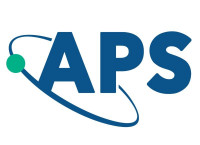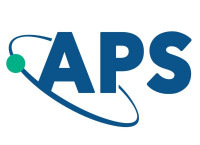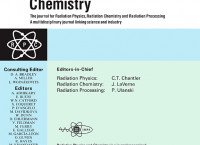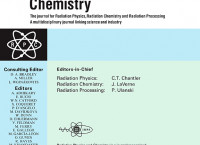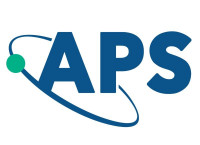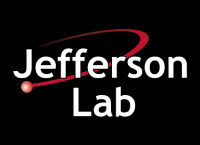The higher efficiency of superconducting radio-frequency (SRF) cavities compared to normal-conducting ones enables the development of high-energy continuous-wave linear accelerators (linacs). Recent progress in the development of high-quality Nb3Sn film coatings along with the availability of cryocoolers with high cooling capacity at 4 K makes it feasible to operate SRF cavities cooled by thermal conduction at relevant accelerating gradients for use in accelerators. A possible use of conduction-cooled SRF linacs is for environmental applications, requiring electron beams with energy of 1–10 MeV and 1 MW of power. We have designed a 915 MHz SRF linac for such an application and developed a prototype single-cell cavity to prove the proposed design by operating it with cryocoolers at the accelerating gradient required for 1 MeV energy gain. The cavity has a ∼3 μm thick Nb3Sn film on the inner surface, deposited on a ∼4 mm thick bulk Nb substrate and a bulk ∼7 mm thick Cu outer shell with three Cu attachment tabs. The cavity was tested up to a peak surface magnetic field of 53 mT in liquid He at 4.3 K. A horizontal test cryostat was designed and built to test the cavity cooled with three Gifford-McMahon cryocoolers. The rf tests of the conduction-cooled cavity, performed at General Atomics, achieved a peak surface magnetic field of 50 mT and stable operation was possible with up to 18.5 W of rf heat load. The peak frequency shift due to microphonics was 23 Hz. These results represent the highest peak surface magnetic field achieved in a conduction-cooled SRF cavity to date and meet the requirements for a 1 MeV energy gain.
The treatment of flue gases from power plants and municipal or industrial wastewater using electron beam irradiation technology has been successfully demonstrated in small-scale pilot plants. The beam energy requirement is rather modest, on the order of a few MeV; however, the adoption of the technology at an industrial scale requires the availability of high beam power, of the order of 1 MW, in a cost effective way. In this article we present the design of a compact superconducting accelerator capable of delivering a cw electron beam with a current of 1 A and an energy of 1 MeV. The main components are an rf-gridded thermionic gun and a conduction cooled β=0.5 elliptical Nb3Sn cavity with dual coaxial power couplers. An engineering and cost analysis shows that the proposed design would result in a processing cost competitive with alternative treatment methods.
Electron beam (EB) is used for disinfection and treatment of different types of sewage and industrial wastewater. However, high capital investment required and the abundant energy consumed by this process raise doubts about its cost-effectiveness. In this paper, different wastewaters, including two textile sewages and one municipal wastewater are experimentally studied under different irradiation strategies (i.e. batch, 60 l/min and 1000 m3/day) in order to establish the reliability and the optimum conditions for the treatment process. According to the results, EB improves the efficiency of traditional wastewater treatment methods, but, for textile samples, coagulation before EB irradiation is recommended. The cost estimation of EB treatment compared to conventional methods shows that EB has been more expensive than chlorination and less expensive than activated sludge. Therefore, EB irradiation is advisable if and only if conventional methods of textile wastewater treatment are insufficient or chlorination of municipal wastewater is not allowed for health reasons. Nevertheless, among the advanced oxidation processes (AOP), EB irradiation process may be the most suitable one in industrial scale operations.
Remediation technologies are urgently needed to degrade poly – and per fluoroalkyl substances (PFAS) in groundwater and soils. Since high energy electron beam (eBeam) technology involves rapid oxidation and reduction reactions it has the potential to breakdown PFAS. In this study, the technology was applied to PFAS-contaminated groundwater and soil samples to degrade PFOS and PFOA and other PFAS. An eBeam dose of 2000 kGy (kGy) reduced PFOS and PFOA concentrations in groundwater by 87.9% and 53.7% respectively. In soils with 10% moisture content, PFOS and PFOA concentrations were reduced by 99.9% and 86.5%, respectively. Out of 17 different PFAS that were detected in the soil sample, the 2000 kGy dose was able to degrade 10 PFAS to below detectable levels: PFNA (initially 19.4 ng/g), PFDA (3.9 ng/g), PFPeS (12.1 ng/g), PFHxS (365 ng/g), PFHpS (18.0 ng/g), PFNS (4.3 ng/g), 4:2 FTS (16.6 ng/g), 6:2 FTS (146.1 ng/g), 8:2 FTS (165.6 ng/g) and PFOSA (171.8 ng/g). Of the remaining 7 PFAS, the removal efficiency ranged between 49% and 99.9%. It appears that eBeam degradation of PFAS in soil is more effective at reduced soil moisture content.
We present the technical and engineering design of a medium energy (10 MeV) and high average power (1000 kW) electron-beam accelerator intended for irradiation treatment of high-volume industrial and municipal wastewater. The accelerator uses a Nb3Sn superconducting radio-frequency (SRF) cavity for producing the high average beam power with >90% rf to beam efficiency. The design of the accelerator is tailored for industrial settings by adopting the cryocooler conduction-cooling technique for the SRF cavity instead of a conventional liquid helium bath cryosystem. The technical design is supplemented with a detailed analysis of capital and operating cost of the accelerator. The designed accelerator can treat up to 12 million gallons per day of wastewater, requires capital of ∼$8 M for construction, and has ∼13.5 ¢/ton/kGy in material processing cost.
The paper outlines the overall results of the ARIES Proof-of-Concept (PoC) project,1 which seeks to tackle the shipping industry’s most pressing problem, its large-scale emissions of nitrogen oxides (NOx), sulphur oxides (SOx) and particulate matter (PM), by developing a hybrid exhaust gas-cleaning technology that combines an EB accelerator with improved wet-scrubbing technology. It is unique – in a single technological system – and addresses all three types of emissions simultaneously. It promises to be cheaper and more efficient than existing solutions. There are two main stages involved: 1) SO2 and NOx oxidation during the irradiation of wet gases by the EB from the accelerator and 2) the absorption of pollution products into an aqueous solution. For the very first time, test trials in a real maritime environment were conducted and attracted the interest of the maritime industry, policy makers and the accelerator community. The PoC has clearly confirmed the potential of this technology and forms a solid basis for the full-scale application of the hybrid system on sea-going ships. The results of this project are of the highest relevance to the accelerator community, as well as the maritime industry and policy makers.



